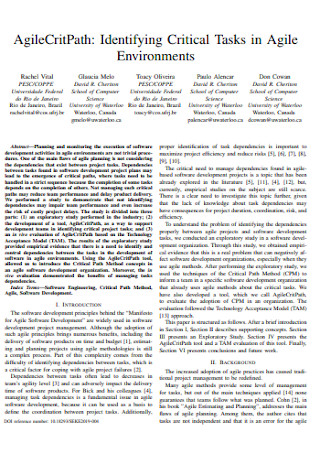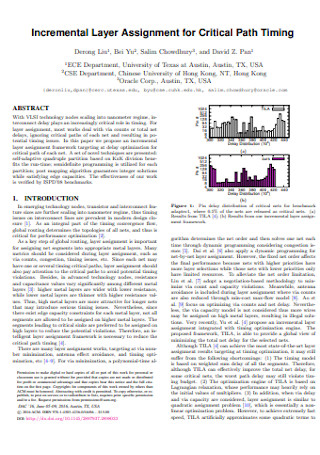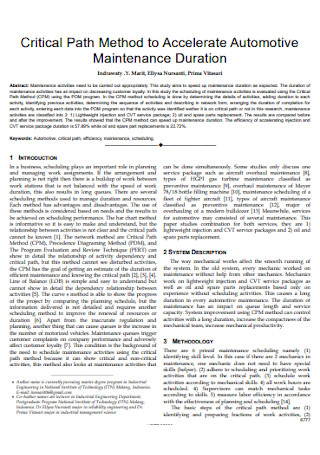27+ Sample Critical Path
-

Critical Task Path
download now -

Critical Path Analysis for Network
download now -

Critical Path Chart
download now -

Project Critical Path Template
download now -

Critical Path in Construction Projects
download now -

Application of Critical Path
download now -

Critical Path and Value Management
download now -

Controlling Our Critical Path
download now -

Critical Path for Technical Courses
download now -

Critical Path Analysis Template
download now -

Critical Path Method Schedule
download now -

Project Duration Critical Path
download now -

Incremental Layer Assignment for Critical Path
download now -

Exercise on Critical Path
download now -

Online Computation of Critical Path
download now -

Primark and Critical Path Analysis
download now -

Implementation of Critical Path
download now -

Critical-Path Method for Construction Plan
download now -

Critical Path in Network Analysis
download now -

Critical-Path Prediction Template
download now -

Critical Path Tracing Template
download now -

Major Critical Path
download now -

Fault Tolerance Off the Critical Path
download now -

Sample Critical Path
download now -

Basic Critical Path
download now -

Simple Critical Path
download now -

Standard Critical Path
download now -

Automotive Maintenance Critical Path
download now
What Is a Critical Path?
A critical path or the critical path method (CPM) is an instrument used to analyze and plan the schedule of the different key or essential activities necessary in order to accomplish the project. It can also be referred to as a critical path analysis (CPA). It is often used together with your PERT document or program evaluation and review technique.
Although most of the time they are used together, there is still a notable difference between the two. The main difference is that the critical path method will focus on the identified critical activities that will greatly affect the project. On the other hand, a program evaluation and review technique will deal with the uncertain activities. Nevertheless, a PERT is also often used in your CPM to help in estimating the required time needed for each task to be finished.
Core Elements Included in a Critical Path Method
Step by Step Process in Creating a Critical Path Method
Step 1: Select a Template or a Format
In order to create an effective and a detailed critical path, it is a must to make use of a format or a template. This will allow the user to have a better understanding of the core elements that are to be included in the document. This will also give the user the means he or she needs in order to create a critical path that is visually appealing.
Take note that a critical path method should be clean. It should clearly outline and showcase the link of the different key activities.
Step 2: List Out All the Activities or Tasks
After having the template or format, it is now time to gather the pieces of information. The first thing to identify is the different key activities or tasks that are required to finish the project.
Identifying the deliverable will also help in order to easily and quickly identify the activities that are necessary. You can make use of a work breakdown structure in order to properly rank the activities according to their importance. Also, a tip that may help is identifying and stating the goal statement of the project. Knowing this you will easily realize and identify the plans of action in order to achieve the said goal.
Step 3: Identify the Relationship of the Activities or Tasks
The next step would be to identify what activities are closely related to one another. What are the activities that are seeking support or dependent on other tasks? It is important to know this as some of the tasks may not commence without the prior tasks being completed first. Some of the tasks may be in need of necessary conditions before they can begin.
In this step, it is a must to identify the sequence of the activities. You should be able to answer one primary question. What is the correct order of implementation of the aforementioned tasks? It is important to identify the prerequisites of all the tasks you have listed.
Step 4: Create a Visual Representation
It is important to have a visual representation of the activities and the schedule. The next step would be to draw a network diagram that will outline and showcase the order of the tasks in which they need to be performed. The dependencies of the activities or the sequence of activities that you have identified from the third step will be your point of reference. The network diagram you will create must be based from that. This can also be referred to as the critical path analysis chart or CPA chart.
Step 5: Identify the Time for Each Activity or Task
The next step would be to identify the timeline of each activity or task. How long will it take for them to be accomplished? It is important to have a close estimation of the tasks. In this step it is also important to calculate the forward pass and the backward pass.
Forward pass
The forward pass can also be referred to as the early start or ES and the early finish or EF computation or estimation. The formula in order to identify the EF = ES + T. T would be the timeframe or duration of the said activity. The value of the early start will be equal to early finish of the predecessor or the prior activity. The value of the early finish of the last activity will be equal to the time required in order to complete the whole project.
Backward pass
On the other hand, the backward pass can also be referred to as the late start or LS and the late finish or LF estimation or computation. The formula to identify the late start (LS) is LS = LF – T. T once again is the duration of the said activity. The value of the late finish is equal to the smallest numerical value of the activity that will be performed next.
After identifying the forward pass and backward pass, it is also a must to identify the float of each task or activity. This will greatly help in identifying the critical path of the project. A float or in some cases it is referred to as the slack, is the duration or amount of time that an activity may be delayed without affecting the schedule of the project. The formula to obtain the numerical value of the float is late start minus the early start (Float = LS – ES).
The activities that a float is applicable will then be rendered invalid in identifying the critical path. This is because even if they are delayed, they will not have a negative effect on the overall schedule of the project as well as the success of the project.
Step 6: Identify the Critical Path of the Project
After identifying the different pieces of information that are necessary, you can then identify the critical path. You can make use of the visual representation of the network diagram and select the longest path or a more conventional approach is by making use of the forward pass, backward pass and the float or slack.
In using the network diagram or the critical path analysis chart, make sure to focus on the number of days and not on the number of boxes. Select the path with the bigger sum of days. On the other hand, you can make use of the forward pass techniques as well as the backward pass technique. In this step you have to identify the value of the early start and early finish as well as the late start and late finish. Make sure that in choosing the critical path, the first step is disregarding the activities that have no value for float. This means that they will not affect the project even if they will be delayed in execution.
Step 7: Review and Finalize
It is important that you review the document before utilizing it and presenting it to the higher ups. Make sure that the computation as well as the highlighted areas in the network diagram are true and accurate.
Benefits of Using a Critical Path Method
A critical path is useful in all projects, especially in big and complex projects. It is a useful and helpful instrument in assessing the different elements of a project. Here are some of the benefits that this will provide.
It Assesses the Activities.
The first benefit that a CPM will provide is that it will help in identifying the activities that are necessary in completing the project. It list out the tasks in an organized way. The activities that it will focus on are the ones that will weigh the most. These are the tasks or activities that must be managed closely because if not, this will greatly affect the schedule of the project. They are the ones that must be completed on time.
On the other hand, it also identifies which activities can be delayed and does not need much attention. These are the activities that a float or slack is applicable. This will mean that they can be delayed without having an effect on the overall schedule of the project.
Another thing to take note of is that it will identify the dependencies between each identified activities or tasks. This means that it identifies the relationship of the activities. It will identify the prerequisites of each activity. This is often called the sequence of activities.
It Is an Instrument for Measuring or Evaluating.
A CPM will state the earliest and latest possible time and date that an activity can commence and can be accomplished. This will lead to an estimate of the overall competition of the project. It can be used to check the actual progress of the project and compare it with the expected time and date stated and signed in the project management plan.
All throughout the duration of the project it can be used as a document that will register or log the activities that are finished already and the ones that are yet to be performed.
It Can Help in Speeding up the Process.
After fully knowing and understanding the critical activities, it gives the project manager the opportunity and the means to modify the schedule of the project. This can help in reducing the time needed in order to complete the project.
A critical path method or critical path analysis will outline and showcase the critical activities that needs to be focused on. This will give the project managers the visual and means of handling the activities efficiently in order to meet the success of the project and in order to obtain and produce the required deliverables. Make use of the pieces of information and the templates above to identify the crucial activities in your project. This is an instrument that will help you become successful.
